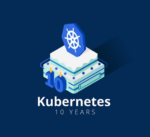
Red Hat wants to make digital transformation more easily attainable for companies with budgetary concerns and proprietary, siloed infrastructures. The company announced a new infrastructure migration solution today designed to break down silos and provide a pathway to cloud-native.
“Legacy virtualization infrastructure can serve as a stumbling block to, rather than a catalyst, for IT innovation,” Joe Fernandes, vice president of cloud platforms products at Red Hat, said in the announcement. “From licensing costs to closed vendor ecosystems, these silos can hold organizations back from evolving their operations to better meet customer demand. We’re providing a way for enterprises to leapfrog these legacy deployments and move to an open, flexible, enterprise platform, one that is designed for digital transformation and primed for the ecosystem of cloud-native development, Kubernetes, and automation.”
The program is broken down into three primary phases, the company explained, each aimed at easing the transition from proprietary virtualized environments into more modern container and Kubernetes-based infrastructures with automation and open-source technologies, which can provide a boost in performance for many applications.
The first phase comes in the form of a “Discovery Session,” in which a consultant from Red Hat gathers personalized information about the existing infrastructure in order to understand the migration. The second is the “Migration pilot,” which begins the process of implementing an open-source platform to gauge even more specific details that will help in the final phase, “Migration at scale,” in which the bulk of the transition occurs, aided by Red Hat’s Ansible Automation workload migration technology, the company explained.
“Red Hat Consulting also offers design and implementation assistance to help build and optimize full-production infrastructures, unify and better streamline operations across virtualization pools, and navigate complex migration cases,” the company wrote in a blog post.
The open-source platform deployed is based on a number of Red Hat technologies, including Red Hat Virtualization, Red Hat OpenStack Platform and Red Hat Hyperconverged Infrastructure, the company said.
“Additionally, Red Hat is working on new innovations to help further bridge the gap between virtual machines and containers,” the company wrote. “The siloed nature of each technology can sometimes stifle digital transformation efforts with undue complexity and limited integration. To help address this, Red Hat has introduced container-native virtualization. Based on the open source KubeVirt community project, container-native virtualization enables developers to work with VMs in the same way that they would work with Linux container-based applications.”







